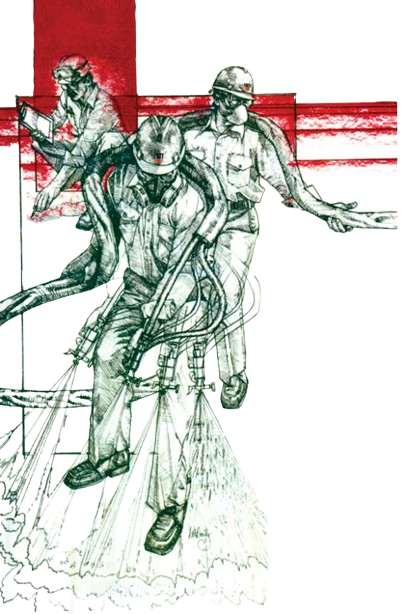A PVC (Polyvinyl Chloride) system in the context of roofing typically refers to a single-ply roofing membrane made of PVC material. PVC roofing membranes are commonly used in commercial and industrial roofing applications due to their durability, longevity, and ease of installation. Here’s an overview of PVC roofing systems:
- PVC Membrane Composition: PVC roofing membranes are made of flexible PVC material reinforced with polyester or fiberglass scrim. The combination of PVC and reinforcement provides excellent strength, flexibility, and dimensional stability, making it resistant to tears, punctures, and environmental stresses.
- Installation Methods:
- Mechanically Attached: PVC membranes can be mechanically attached to the roof substrate using screws and plates. This method involves securing the membrane to the roof deck at regular intervals using fasteners.
- Fully Adhered: Alternatively, PVC membranes can be fully adhered to the roof substrate using adhesive. Adhesive is applied to the underside of the membrane, and then it is bonded directly to the roof deck.
- Ballasted: In some cases, PVC membranes are installed in a ballasted system, where the membrane is loose laid over the roof substrate and held in place with ballast such as gravel or pavers.
- Seam Welding: PVC membranes are typically installed in rolls, and seams are heat-welded together to create a continuous, watertight seal. Heat welding fuses the overlapping seams to form a strong bond that is resistant to water infiltration and mechanical stresses.
- UV Resistance: PVC roofing membranes are inherently resistant to UV radiation and do not require additional coatings or treatments to protect against UV degradation. This UV resistance helps prolong the lifespan of the membrane and maintain its aesthetic appearance over time.
- Reflectivity and Energy Efficiency: PVC membranes are available in various colors, including white, which offers high reflectivity and can help reduce heat absorption into the building. This can lead to lower cooling costs and improved energy efficiency, particularly in warmer climates.
- Maintenance and Repairs: PVC roofing systems require minimal maintenance, typically consisting of periodic inspections and cleaning to remove debris and ensure drainage. Repair to punctures or damaged areas can be done by patching or heat-welding new membrane material over the affected area.
- Longevity: When properly installed and maintained, PVC roofing systems can have a lifespan of 20 to 30 years or more. They offer excellent resistance to weathering, chemical exposure, and environmental contaminants, contributing to their long-term durability.
Overall, PVC roofing systems offer a reliable and cost-effective solution for commercial and industrial buildings, providing superior waterproofing, durability, and energy efficiency. It’s important to work with experienced roofing professionals to ensure proper installation and maintenance of PVC roofing systems to maximize their performance and lifespan.

